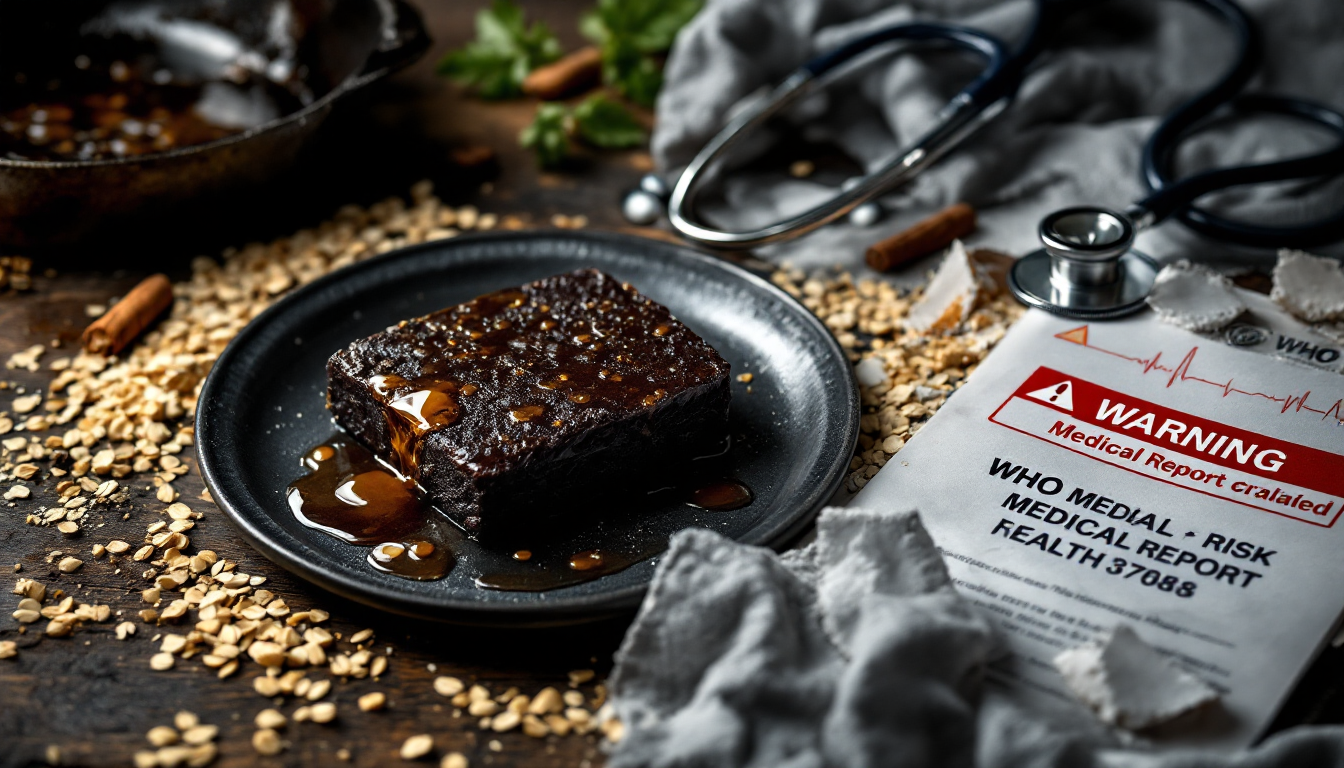Black pudding is a traditional blood sausage with a concerning nutritional profile that demands careful consideration for health-conscious consumers. Made from animal blood, fat, oats, and seasonings, this centuries-old delicacy carries significant health implications despite its cultural popularity.
The Alarming Nutritional Profile Behind Black Pudding
A standard 100g serving of black pudding delivers approximately 297 calories with a staggering 22g of fat – roughly one-third of which is saturated. This single serving provides nearly 35% of your daily saturated fat allowance, directly contributing to cardiovascular concerns. The sodium content is equally troubling, with most varieties containing between 1.5-2.5g of salt per 100g serving – representing up to 40% of your recommended daily sodium intake in just one small portion.
“Black pudding exemplifies the nutritional paradox we often see in traditional foods – rich in certain nutrients like iron but simultaneously loaded with problematic levels of saturated fat and sodium that can promote cardiovascular disease,” explains Dr. Eleanor Jenkins, cardiovascular nutritionist at Cambridge University.
The WHO Classification You Should Know About
The World Health Organization has classified processed meats – including black pudding – as Group 1 carcinogens, the same category as tobacco smoking and asbestos. This classification stems from the processing methods and preservatives often used in production. The nitrates and nitrites commonly found in commercial varieties have been linked to increased colorectal cancer risk through their conversion to carcinogenic N-nitroso compounds in the digestive system.
Hidden Health Risks Beyond The Obvious
Beyond the evident concerns of fat and sodium, black pudding presents additional health challenges:
- High cooking temperatures create potentially harmful advanced glycation end products (AGEs)
- Processed animal blood contains heme iron, which in excess may damage digestive tract lining
- Many commercial varieties contain gluten from oats/barley, problematic for sensitive individuals
- The dense caloric profile contributes to weight gain when consumed regularly
The Deceptive “Superfood” Marketing
In 2016, several media outlets misleadingly labeled black pudding a “superfood” based solely on its iron content. This dangerous mischaracterization ignored the significant nutritional drawbacks. While black pudding does provide protein (approximately 14-18g per 100g) and iron (6-18mg per 100g), these benefits are overshadowed by the cardiovascular risks from fat and sodium when consumed regularly.
“I’ve seen patients with hypertension who consume black pudding regularly, believing the ‘superfood’ claims, while unknowingly exacerbating their condition with each high-sodium serving,” notes Dr. Marcus Wilson, hypertension specialist at Edinburgh Royal Infirmary.
Clinical Evidence of Cardiovascular Impact
The medical literature is clear about the effects of foods like black pudding. A 2018 study in the European Heart Journal followed 44,000 participants and found that those consuming processed meats like black pudding 2+ times weekly showed a 24% higher risk of cardiovascular events compared to rare consumers. The combination of saturated fat and sodium creates a perfect storm for hypertension and arterial damage over time.
Healthier Alternatives Worth Considering
If you enjoy black pudding’s distinctive flavor profile, consider these healthier alternatives:
- Vegetarian black pudding substitutes using beetroot and mushrooms for umami flavor
- Homemade versions with reduced salt and fat, increased oat proportion
- Limited consumption (monthly rather than weekly) of high-quality artisanal varieties
For iron nutrition without the drawbacks, consider whole grains with legumes, which provide iron without the cardiovascular risks.
The Bottom Line on Black Pudding
Black pudding represents a nutritional compromise that’s difficult to justify in a modern, health-conscious diet. Its high saturated fat content, excessive sodium, processed meat classification, and potential carcinogenic compounds make it problematic for regular consumption. Like many traditional foods developed in eras of food scarcity, black pudding was designed to maximize calories and minimize waste – priorities that conflict with contemporary health needs.
When consumed occasionally in small portions (25-30g) alongside fiber-rich vegetables, its impact is limited. However, regular inclusion in breakfast meals significantly increases cardiovascular and cancer risks that cannot be overlooked. The healthiest approach is to treat black pudding as an occasional cultural experience rather than a dietary staple.
